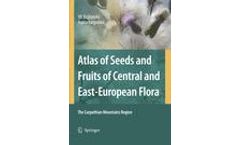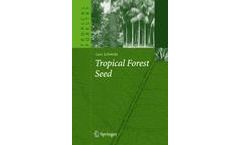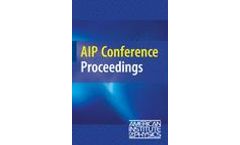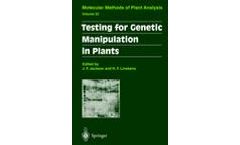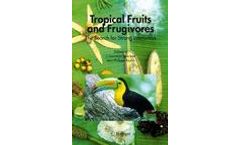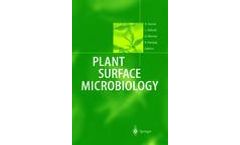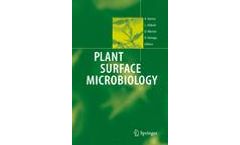Refine by
seeding books
49 books found
Since the morphological characteristics of the seeds are usually constant they are very important for determination of systematic units. The present atlas of seeds with nearly 4,800 seed illustrations is ...
This book is the second major volume dealing with the fruit/seed/frugivore mutualism, which is an ecological interaction of profound importance in many habitats around the world. This mutualism is particularly well-developed in the tropics, where a majority of trees and shrubs depend on animals for their seed dispersal. Detailed studies of this interaction ...
This third edition of the successful and widely-used textbook provides an updated introduction to the science and technology of seeds. It presents a succinct exploration of the seed as a biological system and examines the fundamentals of how seeds are produced, conditioned, evaluated, and distributed in modern agriculture. This edition has ...
The book aims at dealing with all practical issues in connection with practical tree seed procurement and supply in tropical countries, with necessary background information and documentation of applied methods. It starts with seed collection and follows the processes of the standard fates of seeds, from extraction, cleaning, drying, testing and ...
This is the only book to integrate seed technology and the production of agronomic species. It covers the principles and practices involved in producing, conditioning, evaluating, and marketing high quality seeds. The current seed production technology for each species is reviewed, including seeding methods; weed, insect ...
This diversity of disk properties is certainly the seeds for the well known diversity of about 350 exoplanets so far detected. ...
Dramatic examples of genetic enhancement of seed quality exist relative to hardness, germination, protein quality and quantity, oil, and many other traits. Maintenance of seed quality is also paramount in the preservation of biodiversity. Readers first learn fundamentals of preserving and enhancing good agronomic seed quality as well as specific ...
This book covers various basic and applied aspects of somatic embryogenesis and the technology of synthetic seed. It contains thirty-one chapters and is divided into the following three sections:I: Cell's Commitment to Embryogenesis; Early Events and Anatomy; Molecular Basis and Gene Expression; Role of Polyamines; Machine Vision Analysis of Somatic Embryos.II: Applications of ...
Eleven peer-reviewed papers address many of the latest challenges to the agrochemical formulations industry regarding global trends and regulatory drivers.Topics cover:• Formulations• Regulatory Initiatives • Delivery Applications• Research: Soil, Seed, Test ...
This book provides an overview of the main research results, and focuses on plant communities, vertebrate communities and evolutionary ecology, frugivory and seed dispersal, and forest ...
The debate over genetic manipulation and its use in plant improvement and protection has led to an increased demand for developing methods for detecting and characterizing genetic manipulation in plants and plant products such as seeds and foods. This book is unique in presenting all relevant methods together in one volume: those for using and determining markers retained in ...
In total, 12 primary contributors, including noted plant and animal ecologists, present newly-analyzed long-term datasets on the floristics and phenological rhythms of their study sites, identifying important seed dispersers ...
Topics cover: Formulations Regulatory Initiatives Delivery Applications Research: Soil, Seed, Test ...
Interactions between plants and microorganisms are often located on plant surfaces, such as leaf cuticles, seeds and mainly on the ...
Interactions between plants and microorganisms are often located on plant surfaces, such as leaf cuticles, seeds and mainly on the ...
Biological Control with Introduced Soil and Plant-Associated Microorganisms: Biological Control of Damping-Off Diseases with Seed Treatments; T.C. Paulitz. Strategies for Greater Use and Commercialization of Biocontrol: ...
These include cellular contro of morphogenesis, light regimes in tissue culture, maturation and rejuvenation, synthetic seed, genetics of micropropagated plants, haploid embryogenesis, ...
A vast expansion of interest in mycorrhiza is manifest worldwide, resulting in public awareness that the productivity of plants and the quality of leaves, flowers, fruits and seeds are determined by the activities of root systems and ...
The Manual emphasizes all stages of seeding production from nursery-site selection throught outplanting. ...
These compounds have important ecological functions, providing protection against attack by herbivores and microbes and serving as attractants for pollinators and seed-dispersing agents. They may also contribute to competition and invasiveness by suppressing the growth of neighboring plant species (a phenomenon known as allelopathy). ...

